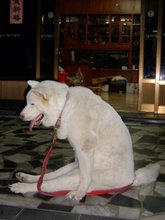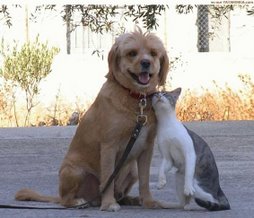Importance of appraisal & rewarding - Part II
It is also important to make your dog desire to execute a specific command. If for example you administer a physical correction during the acquisition phase of a particular command, it may decrease the dog’s desire to perform the command at all. That is why it is usually recommended to avoid physical corrections until your dog clearly understands and obeys to your commands.
Example:If you are trying to teach your dog the command “down” and what you do is pull her with the leash or you push her down with your hand, it is likely that the dog will react by moving away from your hand or resisting from being pushed. A good alternative would be to use a cookie or any food treat to lure her and increase her desire to sit down. So FOCUS ON REWARDING your dog instead of correcting her.
If the dog is being asked to perform a difficult exercise and she makes a mistake even after you try to correct her, then you should not repeat the exercise in the same way as it caused the dog to fail. Keep in mind that any corrections should not be given often, the correct timing is very important.
Example: if you are working with a dog on a long leash to develop a dependable recall (“come” - command), the timing of the correction and what you do after it will dictate what the dog learns. When you give the “come” command, if you correct the dog too early and not give her enough time to respond, she may not feel comfortable leaving your side. If you correct her after she has turned toward you or for not coming fast enough, she may learn that coming is not a rewarding behavior. This is why it is so important for your dog to understand what you want before you use corrections.






No comments:
Post a Comment